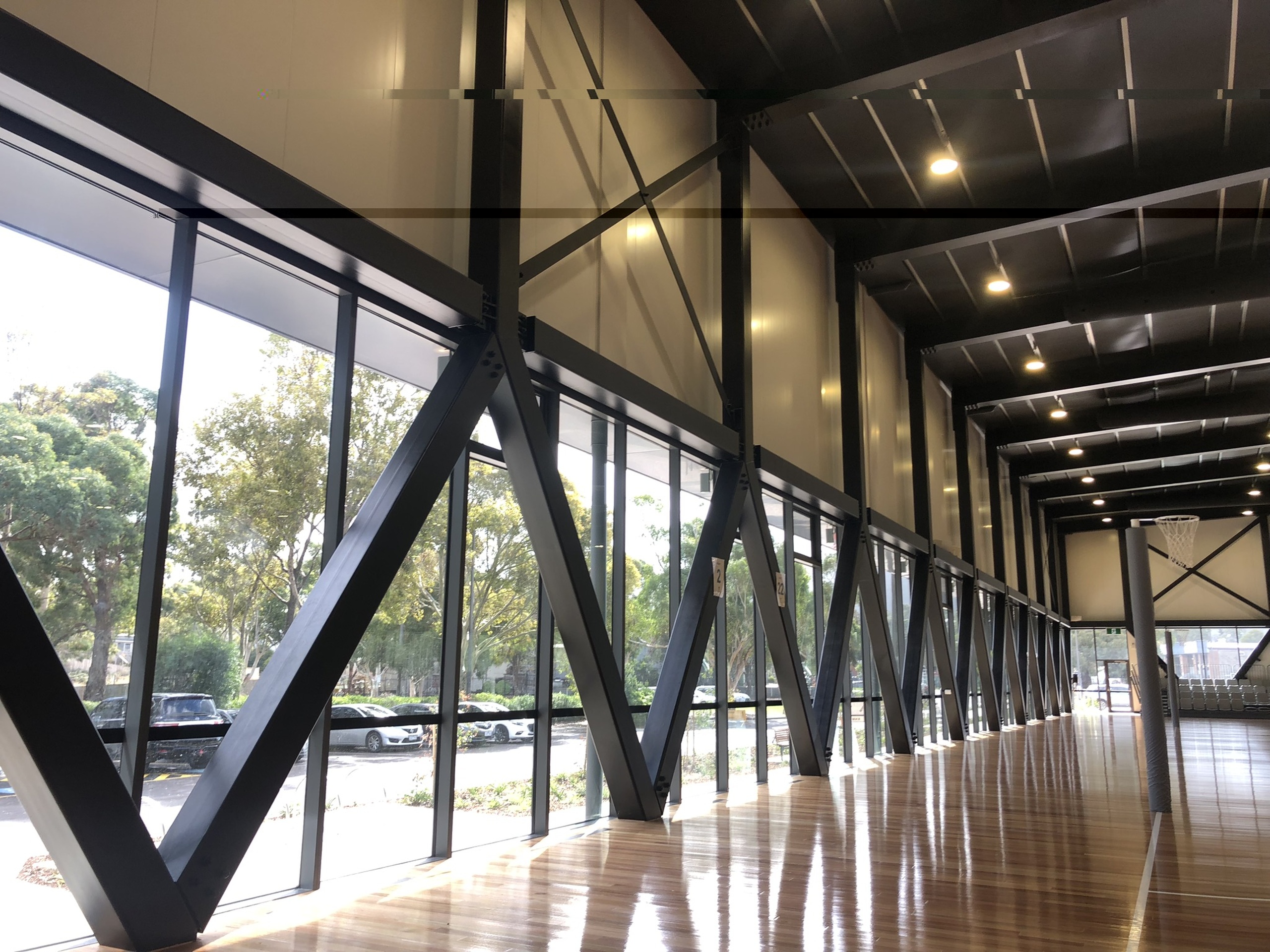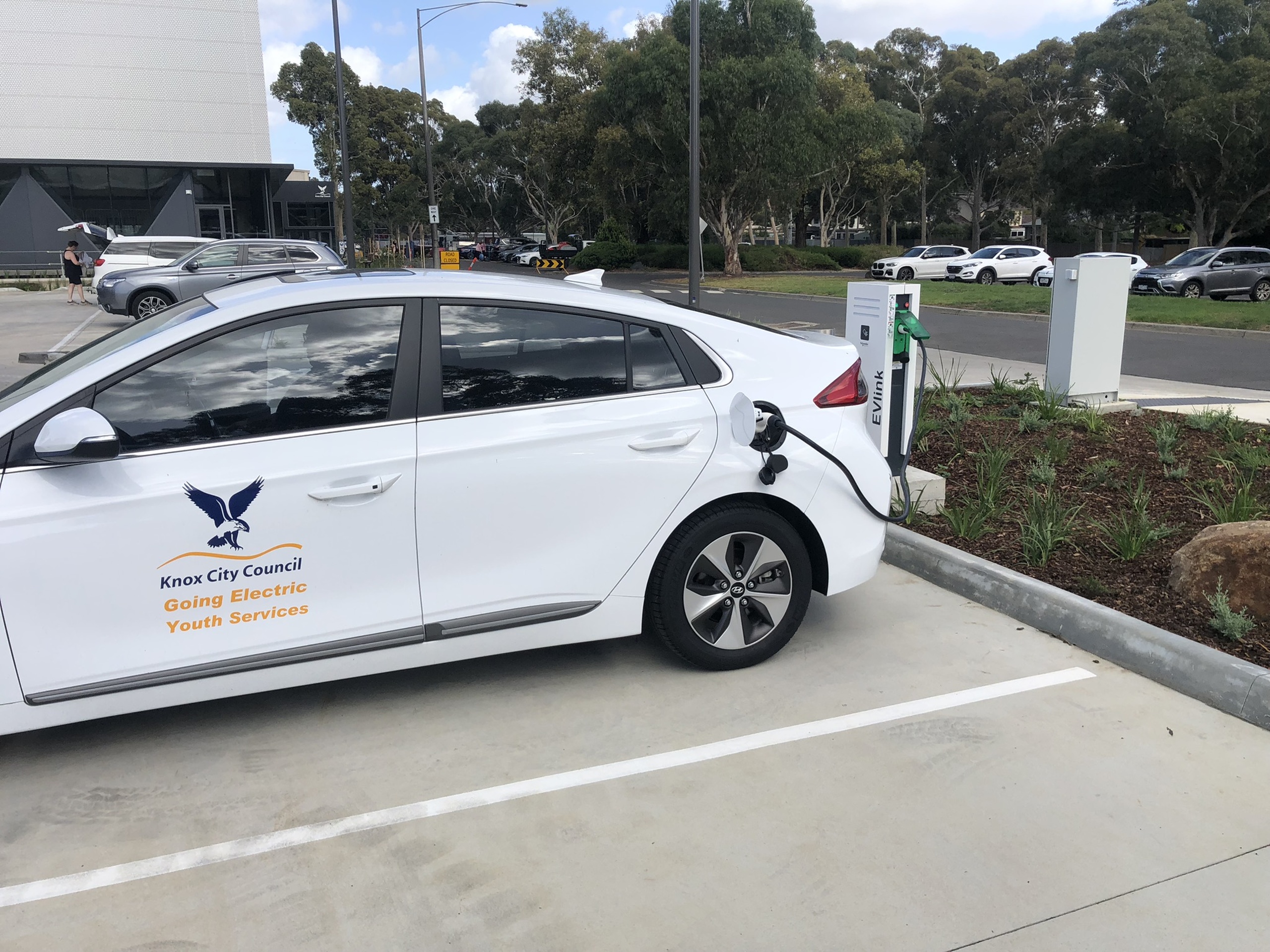There is growing recognition of the benefits that Green Star certification can bring to council facilities, firmly putting to bed the argument that it's only for large-scale, inner-city projects.
One Victorian council has demonstrated these benefits through the Knox Regional Netball Centre (KRNC) Extension project in Ferntree Gully. Located deep into the eastern suburbs of Melbourne, this innovative facility highlights the significant value and positive impact of Green Star certification, setting a strong example for others to follow, no matter their size.
Recently certified 4 Star Green Star, with a total of 50 points for Design and As Built, this freshly renovated and extended 2,967 m2 building contains netball courts, offices, a meeting room, amenities, a kiosk — and it is 100% fossil fuel free in operation.
As Ian Adams from Organica Engineering (Council’s ESD Contractor) said "operationally, the biggest carbon emission in scope 1 & 2 for this building, we think will be the people puffing and panting as they play netball."
We had the chance to talk to the team behind KRNC, to find out the story behind the innovative project.
Why 4 Star Green Star?
The team at Knox City Council and Organica Engineering felt the 4 Star Green Star certification suited Knox Council’s Best Practice target for the mid-sized buildings contained in the Knox Sustainable Buildings and Infrastructure Policy. But the main benefit of obtaining a Green Star rating was quality assurance. Ensuring that the ESD features of the building were designed and documented by the design team, delivered by the builders, and commissioned effectively to run efficiently means reassurance that Council will get great value, and a high performance building that performs as intended.
Not only did Knox City Council want quality assurance for the project, but they were also equally committed to managing greenhouse gas emissions.
“The Zero emissions outcome was also very important for us. Knox City Council has developed a Climate Response Plan 2021-2031, which sets out our targets and provides a roadmap with measurable actions on how this will be achieved in partnership with the Knox community. No fossil fuels are used in the building operations. A power purchase agreement for 100% renewable energy from the grid creates a zero operational carbon building,” said Grant Thorne Director Infrastructure at Knox City Council.
With more and more local councils like Knox stepping up and putting sustainable buildings into action within communities, the importance of considering the lifetime cost of operations cannot be understated. This is especially true when the building is to be handed over to a community group to operate.
“The Knox Sustainable Building and Infrastructure Policy considers the lifetime costs and advocates for sustainable buildings and infrastructure, taking into account climate risks and biodiversity impacts amongst other things. For larger, more complex projects, a certification (like Green Star) that’s publicly recognised, and understood by the industry, is an important way for everyone involved in the project to understand the sustainability goals and design intent,” said Ian.

Efficient buildings & low operating costs
This is a state-of-the-art public sporting facility that demonstrates that electrification and zero carbon in operation are affordable and practical now, not in 2030 or another far off date. By using Green Star, the team was able to develop an efficient multipurpose building with monitoring abilities to ensure the building meets its energy targets.
Additionally, the efficiency measures and solar battery system can save approximately $120,000 per year, compared to a Building Code compliant reference building.
How was this done?
- The project has several state-of-the-art energy efficiency measures, as well as a large 50kW solar and 60kWh battery array to capture renewable energy. The project received 22 out of a possible 23 Green Star points for energy (including 4 solar and battery innovation points).
- The project designed a renewable energy system with solar PV with on-site batteries that would supply about 50% of the total yearly demand (68,217 kWh) of the project, that would otherwise be supplied by the grid.
- The renewable energy system was modelled using System Advisory Model (SAM) (developed by the National Renewable Energy Laboratory, USA), which is deemed by the GBCA Energy Calculator Guide to comply with Green Star Submission Guideline modelling requirements.
- High levels of insulation and thermal breaks, high performance glazing, and passive design with shading to the north façade windows.
- Energy Recovery HVAC with 100% fresh air servicing the indoor sporting courts.
- The building is fully electrified with efficient LED lighting, LED Highbay Court Lighting, zero fossil fuels, BMS controls, and heat pump hot water.
- No fossil fuels are used in building operations. Knox uses 100% green power which will then transition to a Renewable Energy power purchase agreement from 2025 for 100% renewable energy from the grid, which creates a zero operational carbon building*.
*Zero energy related emissions (scope 1 and 2) assuming 100% Green Power source (excludes hypothetical refrigerant leaks, netball player respiration, and birthday candles)

Notable features
- The building harvests water and has a full WSUD stormwater treatment system with rain gardens integrated into the car parks.
- A 40% water saving with a 100,000L rainwater tank. All downpipes connected to tanks with a charged downpipe system. Water Efficient fittings were chosen, and rainwater is used for flushing toilets. No irrigation system was required as the raingardens are self-watering.
- Great indoor environmental quality (IEQ) – An Energy Recovery Ventilation (ERV) system delivers100% fresh air to the stadium space. Energy recovery uses a packaged unit with a heat exchanger to pre-heat or pre-cool incoming air with the exhaust air, recovering energy that would be wasted in most buildings.
- The building supports active transport, with good bicycle parking facilities and a direct connection to the regional bicycle trail that passes it’s boundary.
- The batteries improve resilience, allowing the building to be run off-grid if needed.
- Retaining and refurbishing an existing building on the site, rather than demolishing and replacing it, saving cost, materials and embodied energy, and providing a larger combined facility.
- 22kW EV charging provided for visitors and the local community.
A genuinely innovative solar battery system
Knox Council has also pioneered the use of Zinc Bromide flow batteries in public buildings in Australia, securing them a Market Transformation credit in their Green Star rating. KRNC is the third building Knox City Council have integrated the Australian designed and owned technology into.
The project has developed an original proprietary battery management system for this project (and other sites in Knox). This onsite storage system includes the use of Redflow ZBM Zinc-Bromine batteries, each with a capacity of 10kWh and a power rating of 3kW.
The new system includes the first 12kW Deye 3-phase hybrid inverters, solar PV panels, and 6 Redflow zinc-bromine flow batteries. The 6 batteries provide 60kWh capacity and 18kW continuous power, enough to run the Main Court Lighting. The flow batteries have the benefits of 100% depth of discharge, serviceability, low embodied carbon in manufacture, enhanced fire safety, a long-projected lifespan with zero capacity degradation (greater than 20 years) and end of life recyclability.
Various battery sizes were modelled in SAM (Modelling software) to optimise the services provided and the return on investment. The 60kWh size was matched to the 50kW solar panel array to help the building use solar power for the evening peak period. Either excess solar, or cheap off-peak wind power can be used for the early morning building warm up. The batteries will also help with grid services such as load shedding, peak energy demand reduction, and grid failure resilience.
Does the team behind KRNC have any advice for local councils considering Green Star in similar familiar facilities?
The big benefits of using Green Star for Council and their environment team came in four parts:
- Leadership – This project publicly demonstrates council leadership, confirming that they are implementing their policies and values. Two of Knox Council’s relevant values that inspired this project are “Do what’s right, not what’s easy” and “Think Big, Act Bold”
- Better implementation – Green Star “calls the bluff” of the entire design team and the builder on genuinely documenting and delivering all the intended ESD features and outcomes. Great ESD is often something promised based on good intentions, but somehow not quite delivered. Importantly, Green Star recognises that ESD is not simple or cheap, but it is undeniably valuable.
- Easier for council officers – Council officers often do not have the capacity to be on site or to always review all technical design and construction details. Green Star requires the GSAP and the entire design team to demonstrate delivery of ESD intentions.
- Building commissioning and tuning – Usually, buildings are delivered poorly commissioned. They work, but they do not operate efficiently. The Green Star commissioning and tuning credits mean that more work is done at the tail end of the project, so the building is more likely to live up to its environmental design potential.